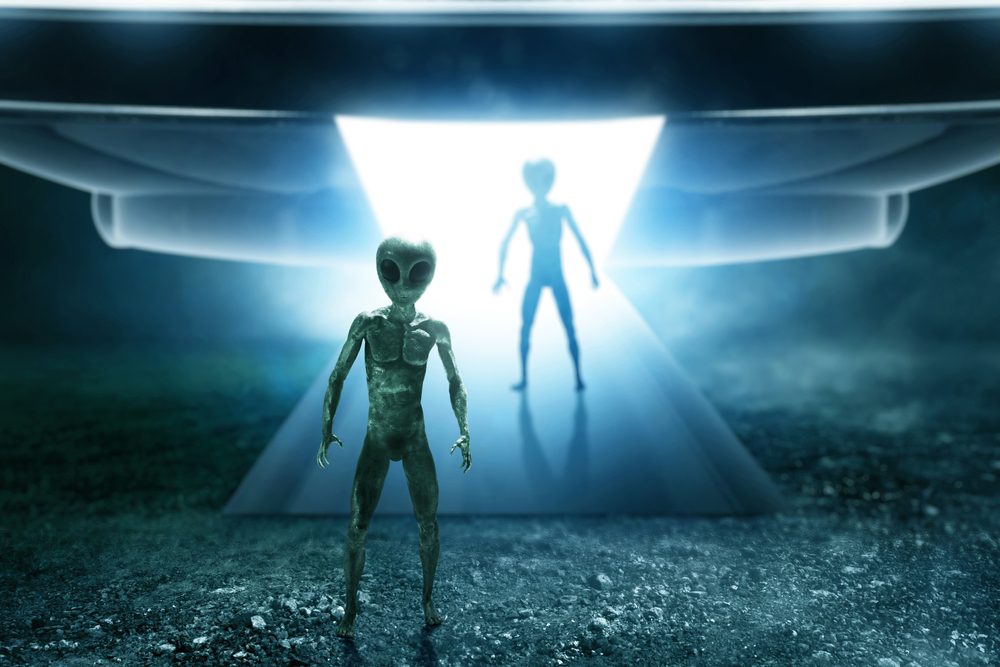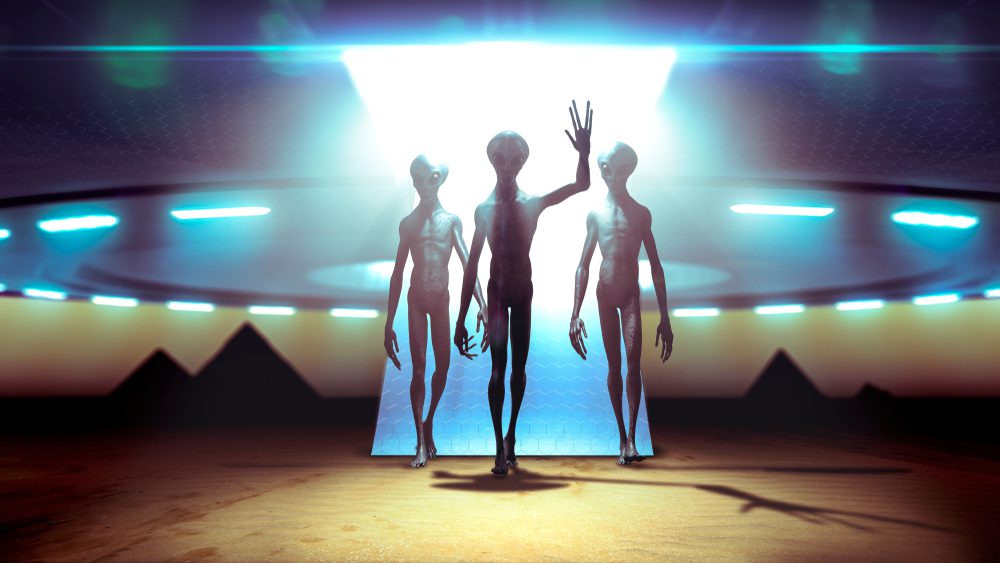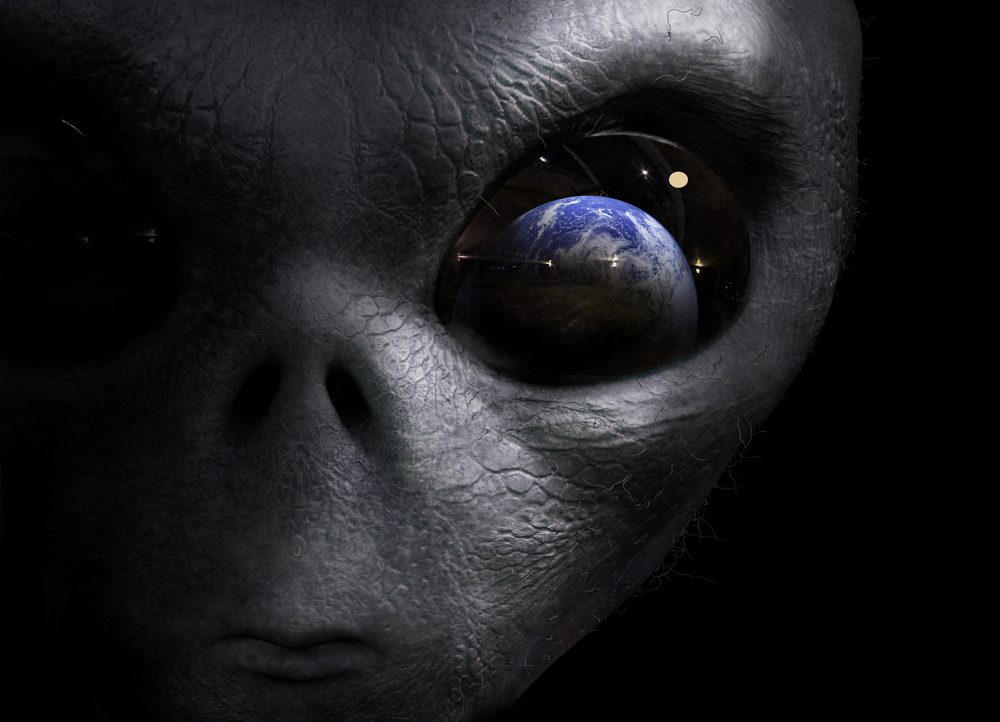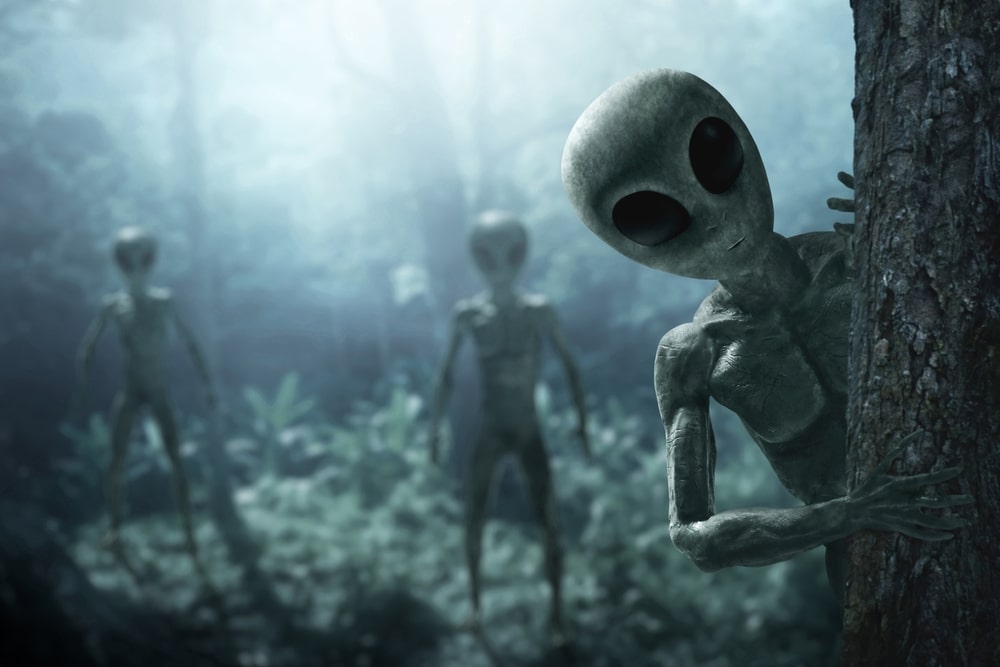Ready to read every piece of evidence for aliens that will convince you we’re not alone?
For those of us who believe in aliens, it’s only a matter of time until these creatures arrive on our planet and ask for a Pumpkin Spiced Latte (or that’s just my take). Over the course of years, lots of hints have emerged showing there might be life beyond Earth.
And most people (me included) chose to believe them, because otherwise, why would they be there in the first place? Well, today we’re going to discuss every piece of evidence for aliens that you need to know. If you don’t believe in aliens, trust me, you might start today! Let’s see:

1976: the Viking Mars landers discovered chemical signatures as proof of life
Multiple tests were conducted on Martian soil samples, conducted by NASA’s Viking landers, and all these tests hinted towards chemical evidence of life. In fact, one experiment required mixing soil with radioactive-carbon-labeled nutrients and being tested for the production of radioactive methane gas.
As it turned out, the test reported a positive result. Also, the production of radioactive methane proved that something in the soil was somehow metabolizing different nutrients and radioactive gas. Additional experiments on board didn’t succeed in finding any evidence of life, and that’s how NASA declared the result as false positive.
1977: the unexplained extraterrestrial “wow!” signal is detected by an Ohio State University radio telescope
In August 1977, an advanced Ohio State University radio telescope caught something unusual: it was a pulse of radiation coming somewhere near the constellation Sagittarius. The signal lasted a total of 37 seconds. It came as such a shock, that an astronomer even shouted “Wow!” on the telescope printout.
The signal was caught within the band of radio frequencies that are generally banned on Earth. On top of that, natural sources of radiation from space usually come in a wider range of frequencies. As the closest star in that direction is 220 million light-years away, it was either an enormous astronomical event or intelligent aliens with super-advanced transmitters who tried to contact us. Up to this day, the signal remains unexplained.
1996: Scientists discover Martian “fossils” in meteorite ALH84001 from Antarctica
NASA scientists made a very controversial announcement back in 1996 when they discovered something that seemed to be fossilized microbes in a potato-shaped lump of Martian rock. The rock was somehow blasted off the surface of Mars in a God-given collision, and traveled around the solar system for 15 million years, before falling in Antarctica.
After thorough analysis, the rock seemed to contain organic molecules and small specs of mineral magnetite, similar to the Earth bacteria. Under the electron microscope, NASA discovered “nanobacteria”. However, most evidence has been slowly discarded, especially since other experts suggested the particles of magnetite weren’t similar to those found in bacteria. They also claimed that all organic molecules were coming from Earth.

2001: Additional rigorous calculations connected to the 1960s “Drake equation” prove that our galaxy has hundreds of thousands of life-bearing planets
In 1961, the US radio astronomer Frank Drake made a new equation to estimate the number of planets that might host intelligent life, and are also capable of communicating with us, in our galaxy. The Drake equation adds together a multitude of factors, such as the formation rate of stars similar to our Sun, the fraction of Earth-like planets, and the fraction of those planets on which life develops. Most of these figures are open to wide debate, but Drake estimated the final number of communicating civilizations in the galaxy is somewhere around 10,000.
Well, in 2001, another (more rigorous) estimate of the number of life-bearing planets in the entire galaxy came up with a much bigger figure: hundreds of thousands. It was the very first time when researchers were able to estimate how many planets could live in the “habitable zone” around stars, but also where water is liquid and photosynthesis could occur. The results showed that an inhabited Earth-like planet might be as little as a couple of hundred light years away.
2001: That red tinge of Jupiter’s moon Europa is believed to be due to frozen bits of bacteria, which would explain the mysterious infrared signal it gave
As it turns out, alien microbes might be behind Europa’s red tinge, as it has been suggested by NASA researchers in 2001. Even if the surface is mostly cold, data confirmed infrared radiation is present in a very peculiar way. In other words, scientists discovered magnesium salts binding together.
However, up until now, no one was capable of coming up with the right combination of compounds that would explain the data. More interesting than that, the infrared spectra of some of that Earthly bacteria, especially the ones that thrive in extreme conditions, resemble the data (but so do magnesium salts).
On top of that, they’ve noticed that some of them are red and brown, which could somehow explain the moon’s ruddy complexion. Even if the bacteria couldn’t live in the scant atmosphere and -170°C surface temperature of the satellite, no one excludes the option of living in the warmer liquid interior.

2002: Russian scientists argue that a super mysterious radiation-proof species of microbe could have evolved on Mars
In 2002 Russian astrobiologists declared that super-hardy Deinococcus radiourans grew on Mars. The microbe can easily survive thousands of times the radiation needed to kill a human. The Russians destroyed a population of bacteria with the needed amount of radiation to kill 99.9%, which allowed survivors to repopulate.
After 44 rounds, they added 50 times the original dose of radiation. Then, they tried to figure out how many cycles would take to make E.coli as resistant as Deinococcus. Let’s just say that there isn’t enough life on Earth for that to happen.
However, on the surface of Mars, which is completely unprotected by a dense atmosphere, there’s so much radiation, the bugs might receive the same dose in a few hundred thousand years.
2002: Chemical hints of life are discovered in old data from Venus probes and landers. There’s a chance for those microbes to come from Venusian clouds.
Life in Venus clouds could potentially explain some peculiar phenomena, especially related to the composition of its atmosphere. Solar radiation and lightning are supposed to generate masses of carbon monoxide on Venus. However, it barely happens, as if something removes it.
Hydrogen sulfide and sulfur dioxide are also there, and these two already react together and aren’t generally co-existing, unless there’s an intricate process that’s constantly churning them out. What’s even stranger than that is they found carbonyl sulfide, which is only produced by microbes or catalysts on Earth, not by other inorganic matter.
2003: Sulphur traces on Jupiter’s moon Europa have been discovered and traced down to the underground bacterial colonies
In 2003, Italian scientists came up with an interesting hypothesis: sulfur traces on Europa might be proof there’s alien life out there. Initially, the compounds were detected by the Galileo space probe, with proper evidence there’s a volcanically-warmed ocean beneath the moon’s icy crust.
The sulfur signatures look a bit similar to the waste products of bacteria, which are currently locked into the surface ice of many lakes in Antarctica. The bacteria are preserved in the water below, a process which might resemble the one on Europa (the satellite). However, plenty of researchers rejected the idea, stating that the sulfur comes from the other moon, Io.
And what better way to research the matter than read a great book about it? We strongly recommend you read “Aliens: The World’s Leading Scientists on the Search for Extraterrestrial Life“, by Jim Al-Khalili.
If you enjoyed reading this piece, we have many other articles you’d definitely like to read, such as: Top 6 Biggest Science Fails You Must See














